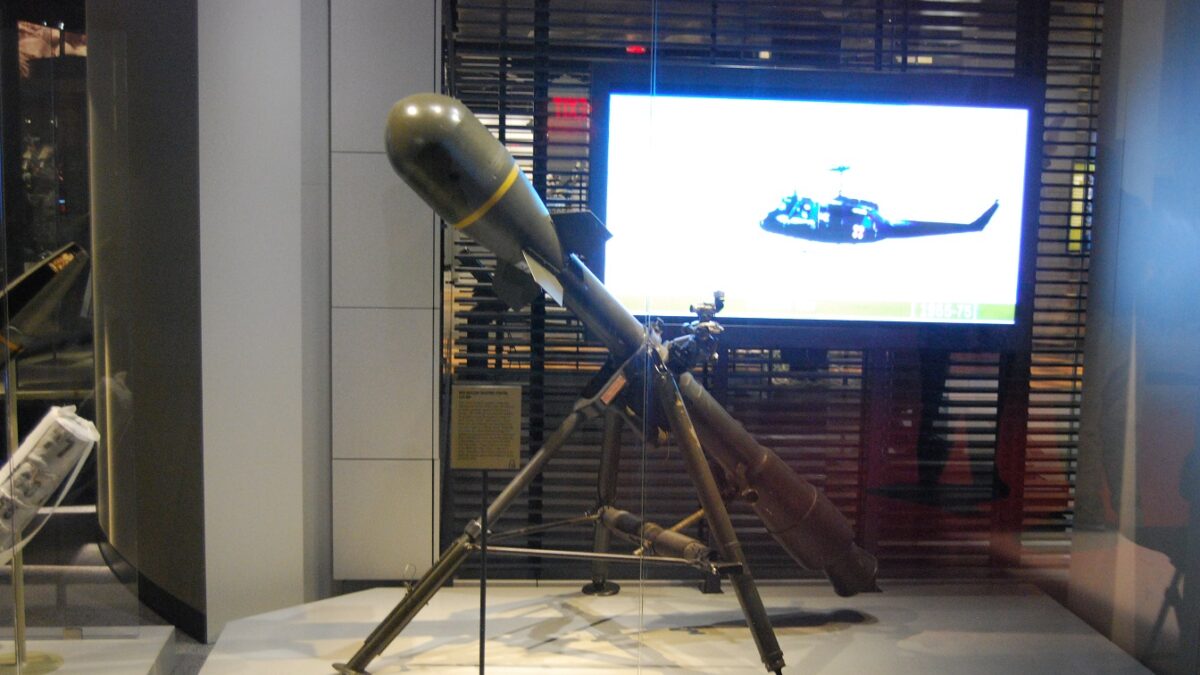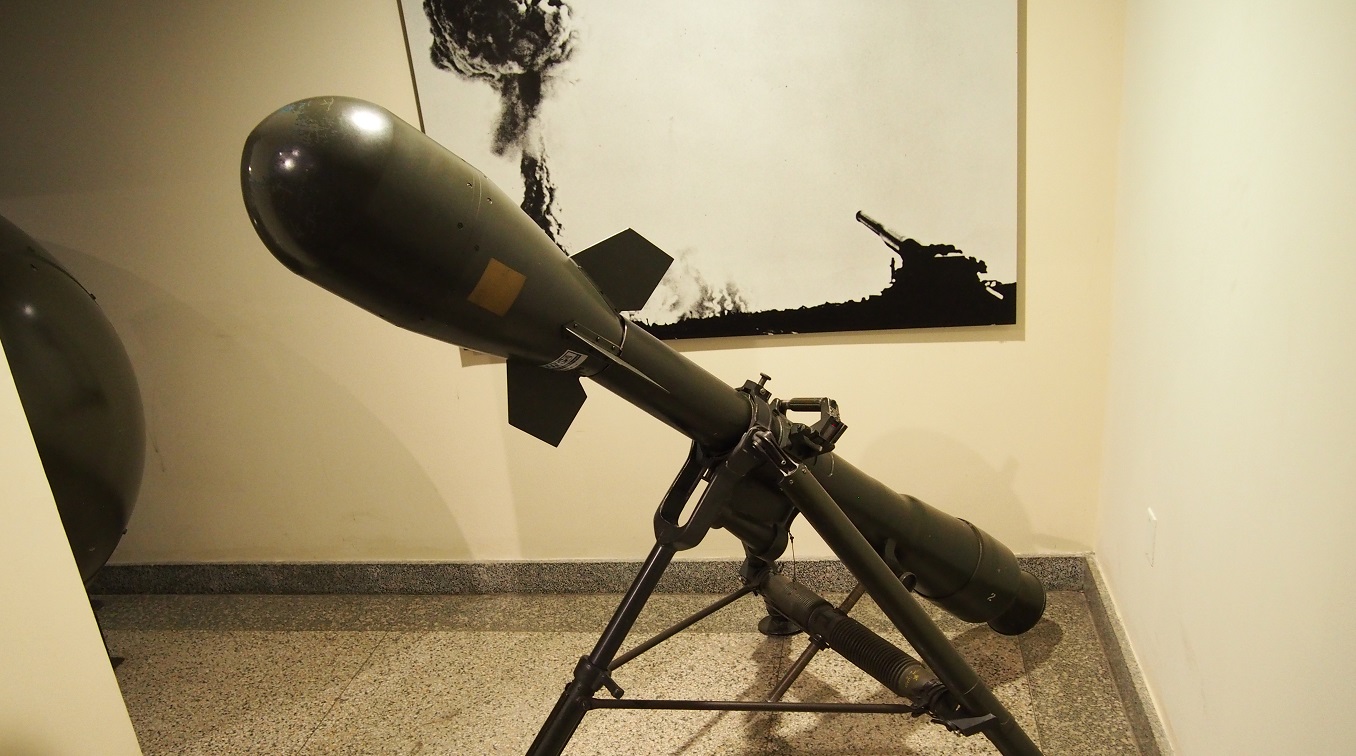Meet the Davy Crockett: The words “nuclear weapon” and “small” typically don’t go together – and no one would consider the devastation that such a device could unleash to be small by any stretch of the imagination. Yet, during the Cold War, the United States Army developed what was actually the smallest weapon in the Department of Defense’s (DoD’s) nuclear arsenal.
It was the M28/29 Davy Crockett, essentially a recoilless rifle system that could be operated by a three-man crew.
At the time, the U.S. Navy and U.S. Air Force maintained America’s strategic nuclear arsenal of long-range bombers as well as submarine and land-based ballistic missiles, while Army focused on the development and deployment of tactical nuclear weapons for possible use on the battlefield. Beginning in the 1950s, the Army developed a number of unguided rockets, guided missiles, artillery shells, demolition charges, and other systems that could be used to carry nuclear warheads, with yields ranging from a fraction of kiloton to a few megatons.
The Davy Crockett was essentially among the “tactical nuclear weapons” in the U.S. military’s arsenal.
Quite the Grin!
The M28/29 Davy Crockett, named for the American soldier and Congressman David Crockett, had a yield of 20 tonnes of TNT. The development was spurred as part the response to the first detonation of a Soviet nuclear bomb in 1949. In less than a decade, Atomic Energy Commission (AEC) successfully created a small fission warhead that could be deployed for frontline use by infantrymen. The AEC subsequently turned the responsibility of incorporating the warhead into a weapon system over to the Army’s Chief of Ordnance, Major General John H. Hinrichs, and work on the project commenced at Picatinny Arsenal in New Jersey in January 1958.
The mindset of the ear was that it could be employed by a highly-trained infantry unit designated the Atomic Battle Group (ABG), which could police the border between East and West Germany. The Davy Crockett moniker was chosen as the folk hero told a tall tale of running out of ammunition and having to “grin a bear to death.” As the Soviet national animal was a bear, it was seen as fitting that the ABG might face the Soviet “bear” in an attack.
It could certainly have done more than merely grin at them.
The weapon was actually meant to stop the advance of enemy troops and tanks by the sheer power of its nuclear explosion, and possibly give the U.S. forces up to 48 hours to counter any Soviet attack with a conventional response. Despite having a mini-nuclear warhead, the operation of the recoilless rifle was itself fairly conventional.
Light and Heavy Versions
The Davy Crockett was produced in two variants, including a “light” M28 120mm recoilless rifle and a “heavy” M29 155mm recoilless rifle. The former had a range of approximately 1.25 miles (2 kilometers), while the larger M29 could launch a projectile out to 2.5 miles (4 kilometers). Each of the variants could fire a 76-pound M388 atomic projectile, which had a diameter of eleven inches and a length of thirty-one inches.
The United States Army began to deploy the first M28/M29 systems to Europe in 1961, equipping ABG sections within the Seventh Army’s armor and infantry battalions, in particular those defending the Fulda Gap in West Germany, the expected invasion route of any Warsaw Pact forces advancing west. In addition, Davy Crockett units were also deployed to Guam, Hawaii, Okinawa, and South Korea. Eventually, the lighter M28 was phased out and replaced by the M29 in all Davy Crockett-equipped units.

Davy Crockett. Image Credit: 19FortyFive.com
While the Army conducted dozens of live-fire tests of the Davy Crockett with training rounds, only two live M388 atomic projectiles were detonated. The first occurred on July 7, 1962, at the Nevada Test Site when an M388 suspended in the air by wires was detonated a few feet off the ground in the Little Feller II weapons shot. Just ten days later, in the Little Feller I shot, an Army crew fired a live M388 from an M29 launcher.
Fortunately, the tactical nuclear weapon was never used in combat, and its service with the Army was considered relatively brief. By 1967, the Army began withdrawing the Davy Crockett from Europe, and by 1971, it was retired from service.
Though there was approval for funding more than 6,200 of the weapons, just 2,100 were ever produced. There are currently nine Davy Crockett casings on display in a number of museums around the country including the National Museum of the United States Army, Fort Belvoir, Fairfax County, Virginia; the National Infantry Museum, Fort Benning, Georgia; the West Point Museum, United States Military Academy, West Point, New York; and National Atomic Testing Museum, Las Vegas, Nevada.
A Senior Editor for 1945, Peter Suciu is a Michigan-based writer who has contributed to more than four dozen magazines, newspapers, and websites with over 3,000 published pieces over a twenty-year career in journalism. He regularly writes about military hardware, firearms history, cybersecurity, and international affairs. Peter is also a Contributing Writer for Forbes. You can follow him on Twitter: @PeterSuciu.

